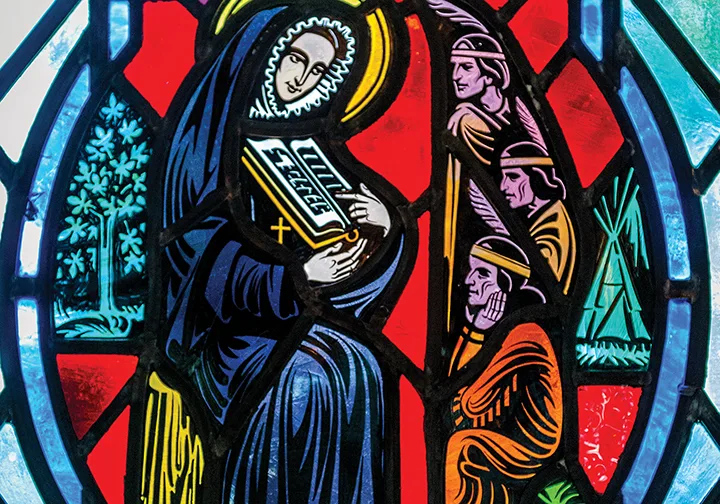
by Moira Cullings
moira.cullings@theleaven.org
MOUND CITY — St. Rose Philippine Duchesne fulfilled her dream to serve Native Americans in the New World.
It just took her 72 years to get there.
Father Barry Clayton — pastor of Our Lady of Lourdes, La Cygne; Sacred Heart, Mound City; and St. Philip Neri, Osawatomie — said the saint’s story of perseverance through adversity is an inspiration.
“She had a lot of hardship on the frontier,” he said. “She didn’t quite get to do all that she had hoped to until the very end of her life.
“From a surface-level perspective, it did seem like there was lots of failure that she met and faced.
“But if we look a little further into it, by our faith, we see that God was powerfully at work in her life, carrying out wonderful good through her sacrifice and her obedience and her service to the Lord.”
Big dreams
She’s the only saint who lived in Kansas.
And although her time at the Sugar Creek mission near Mound City was short, her impact was significant.
She was born in 1769 in Grenoble, France, and after hearing from a Jesuit missionary about the missions in the New World, she made it her life’s goal to bring the love of Jesus to Native Americans.
She joined a religious community when she was 18 years old, but it was dispersed during the French Revolution.
St. Philippine eventually joined the Society of the Sacred Heart of Jesus, where she served for several years before the bishop of the Louisiana Territory asked for the Sisters’ help.
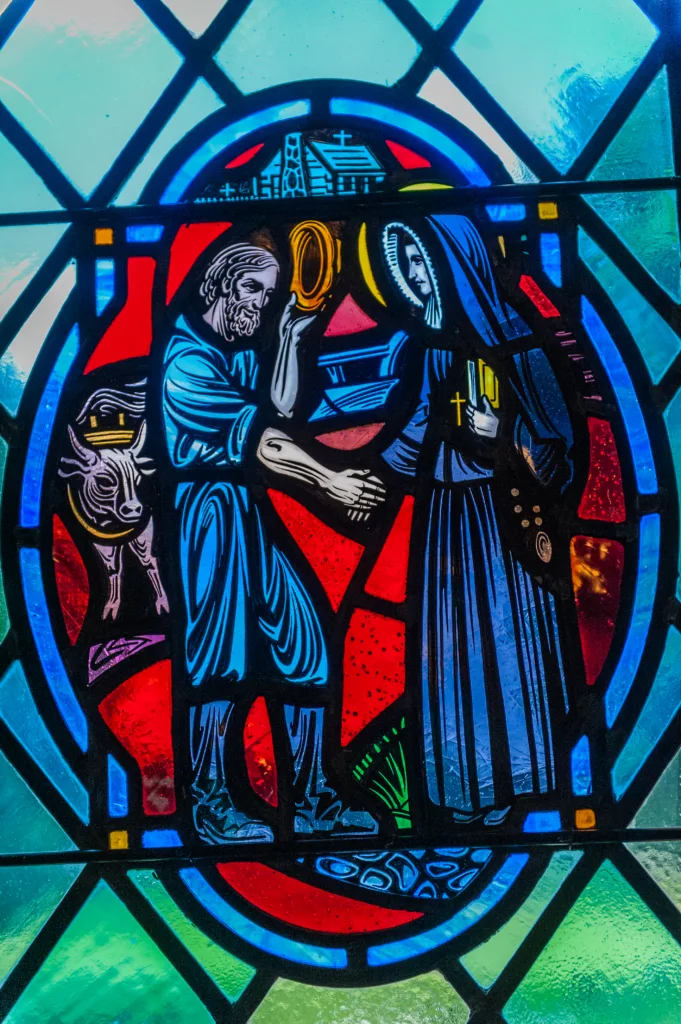
St. Philippine begged Mother Madeleine Sophie Barat, her community’s foundress, to answer the need, and her wish was granted.
“It was finally her chance,” said Father Clayton. “It was an incredible blessing for her finally to be able to get this opportunity after so many years.”
Tough conditions
At the age of 49, St. Philippine traveled for 10 weeks by boat to reach the New World.
“As you can imagine, traveling by boat at that time was very dangerous,” said Father Clayton.
St. Philippine and her fellow Sisters faced hazardous weather, a run-in with pirates and eventually fell ill to scurvy after the ship ran out of fresh food.
But by the grace of God, they made it to New Orleans, said Father Clayton.
“They had a Mass of thanksgiving and were so grateful,” he said. “I think [St. Philippine] even kissed the ground when she arrived because she was so happy that God had blessed her with safe arrival.”
A group of Ursuline Sisters took the travelers in so they could recover their health before they made the seven-week journey to St. Louis.
When they finally arrived there, St. Philippine realized she wouldn’t be doing the work she longed for — ministering to Native Americans — but instead was tasked with opening schools.
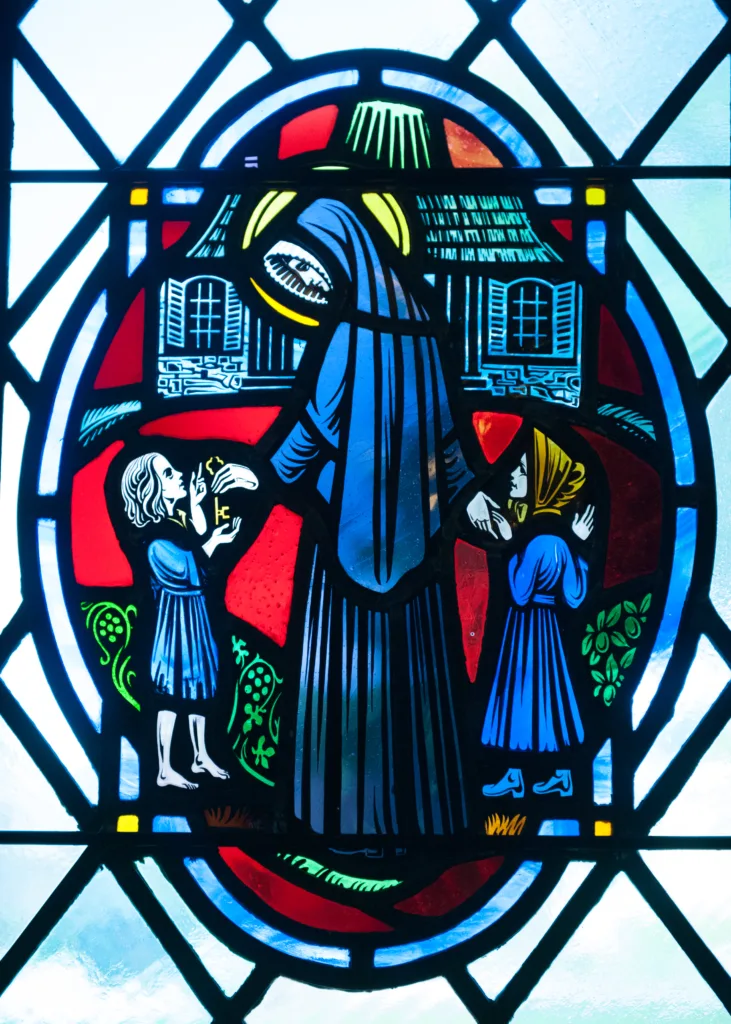
The saint lived near St. Charles, Missouri, where she founded the first house of the Society of the Sacred Heart outside France.
Despite the rough living conditions, St. Philippine opened multiple schools, including the first free school west of the Mississippi.
“She did make it to the New World,” said Father Clayton, “but her heart was really for the Native Americans, and she never really had that opportunity until the end of her life.”
Steadfast prayers
It was after she retired from her role as Mother Superior that St. Philippine was enlisted to care for the Potawatomi in Sugar Creek near Mound City.
Although she was eager to go, her frail health was a concern to others.
“But the priest involved in this work of the mission,” said Father Clayton, “he insisted that she go. [He thought] even if she just prayed for them, it would ensure the success of the mission.”
At 72 years old, St. Philippine made the trek — first by boat on the Missouri River to Kansas City and from there by covered wagon to Sugar Creek.
“The Potawatomi were so happy to have the Sisters come and join them,” said Father Clayton. “They came out to meet them as they got closer and welcomed them back into their mission territory.”
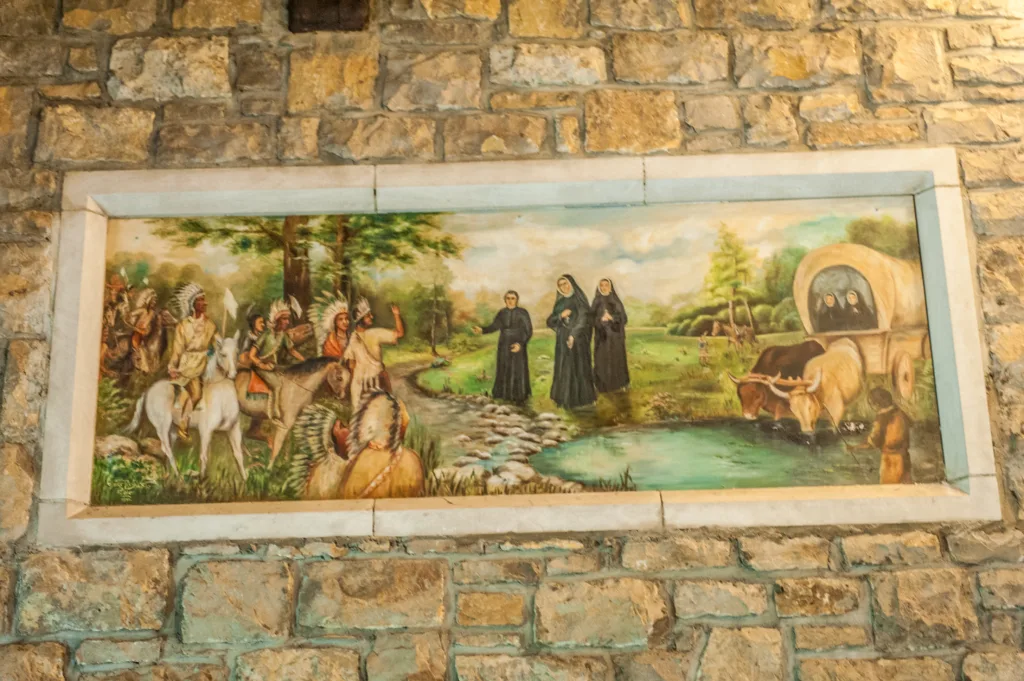
Although St. Philippine was achieving her life’s dream, she struggled to communicate with the Potawatomi because of the language barrier and was only able to stay one year because of her fragile health.
But during that time, she served the way she knew best — through prayer. The Potawatomi, witnessing her constantly kneeling in prayer, even nicknamed her “Woman who prays always.”
Lasting legacy
St. Philippine returned to the St. Charles area, where she lived out the last 10 years of her life.
She was beatified in 1941, and the Archdiocese of Kansas City in Kansas built a shrine church, Sacred Heart in Mound City, in her honor.
She was canonized by Pope John Paul II in 1988.
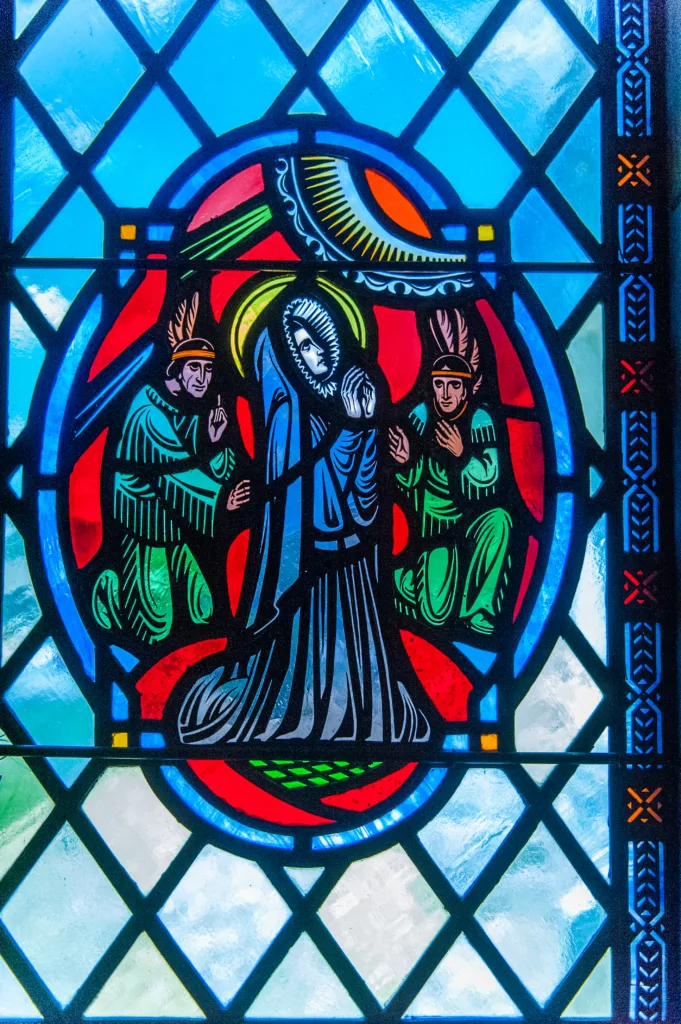
Now, Sacred Heart and the St. Rose Philippine Duchesne Memorial Park, located where she lived, continue to honor her legacy.
“You can go there today and see the foundation stones of where the convent was, where the priest’s house was and where the church was,” said Father Clayton.
He said St. Philippine is a saint everyone can relate to.
“All of us, I think, find ourselves in challenging situations or things that don’t seem to go quite right,” he said. “And it can seem like things are a failure.
“But St. Philippine is an incredible, shining example that even in the midst of hardship and challenges, God can be powerfully at work as we persevere in faith.”
Father Clayton encourages all Catholics to consider making the trip to Sacred Heart and the memorial park.
“We really have something very special to appreciate,” he said. “I think it would be wonderful for more people to come and visit and to be inspired.”






